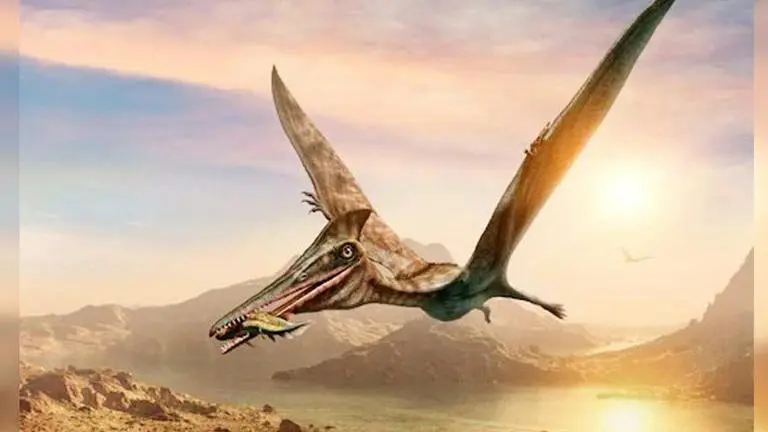Updated 10 August 2021 at 17:40 IST
Prehistoric 'dragon-like' flying reptile fossil unearthed in Australia; 'largest on Earth'
These ‘dragon-like’ flying reptiles were common throughout the world during the age of dinosaurs between 245 and 66 million years ago.
- Entertainment News
- 3 min read

Paleontologists from the University of Queensland (UQ) have discovered fossils of dragon-like flying reptiles. They have described it as the "closest thing to dragon" that could be found on earth.
A spine chilling discovery
- The reptile called 'Thapunngaka shawi,' belongs to the pterosaur family. It is the largest flying reptile ever discovered in Australia. “The new pterosaur… would have been a fearsome beast, with a spear-like mouth and a wingspan around 7m. It was essentially just a skull with a long neck, bolted on a pair of long wings," said Tim Richards, University of Queensland Ph.D. candidate and the lead author of the paper. As per reports, a local fossicker Len Shaw unearthed a lower jaw bone belonging to the pterosaur in Wanamara Country, near Richmond in northwest Queensland. Take a look:
Based on comparisons with the rostra of other anhanguerians we estimate the holotype belonged to an animal with a wingspan around seven metres. This makes Thapunngaka shawi Australia's largest pterosaur, and the third largest nominal species of anhanguerian globally. pic.twitter.com/gXljuVnKZs
— Steve Salisbury (@implexidens) August 9, 2021
Shaw recognised the new species and alerted the scientists at Richmond for the safe recovery of the fossil. The intact bone structure and was later analysed by a team of scientists at the University of Queensland’s Dinosaur Lab. The observations from the study have been published in the Journal of Vertebrate Paleontology. Take a look at the fossil:
According to the study, the fossil belongs to a group of pterosaurs known as ‘anhanguerians.' These flying reptiles were common throughout the world during the age of dinosaurs between 245 and 66 million years ago. However, Australia and especially Queensland were only inhabited by three species.
The ‘closest thing we have to a real-life dragon’
According to the report, the giant bird-like animal, 'Thapunngaka shawi' soared could through the sky above the now extinct Eromanga Sea. it mostly preyed on fish and sea animals. Describing the new species Tim said, “It’s the closest thing we have to a real-life dragon." Terming the species as "savage," Richard added, "It would have cast a great shadow over some quivering little dinosaur that wouldn’t have heard it until it was too late.”
Advertisement
“These crests probably played a role in the flight dynamics of these creatures, and hopefully future research will deliver more definitive answers,” Dr. Salisbury said.
Dr. Steve Salisbury, a co-author on the paper and Mr. Richard’s Ph.D. supervisor, said what was particularly striking about this new species of anhanguerian was the massive size of the bony crest on its lower jaw, which it presumably had on the upper jaw as well. The discovery contributes to the understanding of Australian pterosaur diversity.
The pterosaur was a successful diverse group of reptiles. Its versatility and uniqueness were because it was the first back-boned animal to master powered flight, Richard said. However, these bird-like species had hollow bones to ensure light bodyweight for smooth glides. Given these adaptions, it is very unlikely for bones to exist. “By world standards, the Australian pterosaur record is poor, but the discovery of Thapunngaka contributes greatly to our understanding of Australian pterosaur diversity," he added.
Advertisement
The species has been given an extension name, 'shawi,' to honor the fossil’s discoverer Len Shaw. Now the name Thapunngaka Shawi means ‘Shaw’s spear mouth’. The fossil of Thapunngaka shawi is on display at Kronosaurus Korner in Richmond.
(With inputs from @SteveSalisbury/Twitter) (Image: Shutterstock/representative)
Published By : Dipaneeta Das
Published On: 10 August 2021 at 17:40 IST

